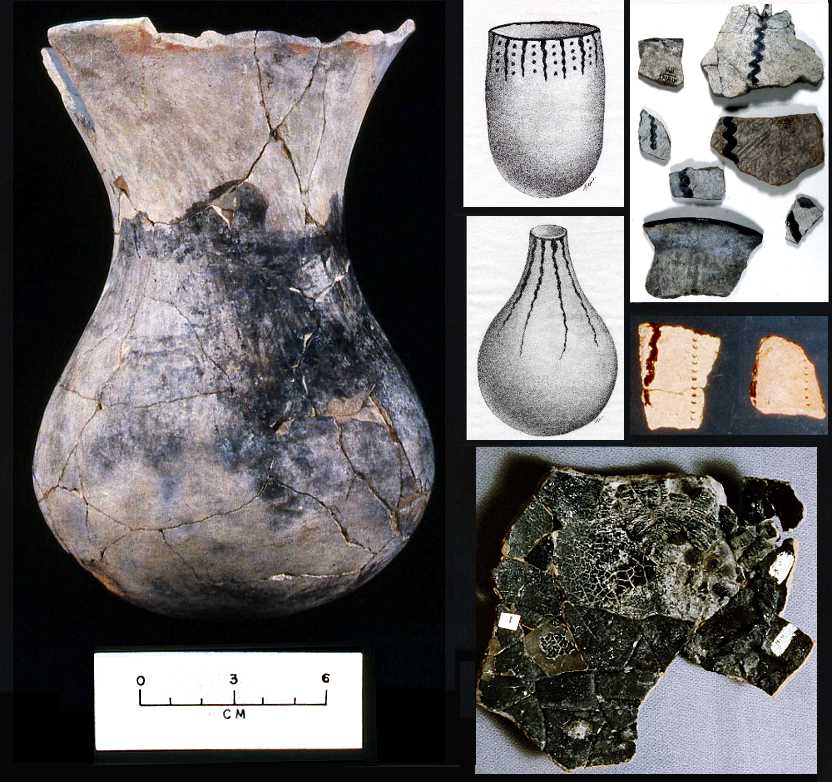
Karankawan potters made ceramic vessels for cooking and storage. Using local sandy clays, the craftsmen typically used a coiling technique to form bowls, widemouth jars, and narrow mouth ollas. Many were coated in the interior with asphaltum, a natural black tar, that served to seal and waterproof the container, as shown in the lower right image. The tar was also used to decorate vessels after they were fired with wavy lines, dots, and bands. Archeologists have named this pottery Rockport ware, and have identified several styles including Rockport Plain, Rockport Black-on-Gray, and Rockport Incised. Narrow-mouth jars, or ollas, such as the vessel shown in the center, were used for holding and transporting fresh water, a critical resource along the coast and brackish marshes. Wide-mouth containers, some of which were made with a bone-tempered clay, likely were used for cooking. The Karankwa were prolific potmakers, as evidenced by the hundreds if not thousands of small sherds often found on archeological sites attributed to them. The jar at left, from the Kirchmeyer Site near Corpus Christi, is one of only a few examples of a complete, reconstructed Rockport vessel. Photos from TARL Records; drawings by Frank Weir.